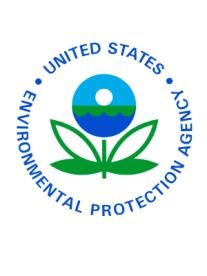Summary: On May 12, 2016, EPA issued three final rules to reduce methane emissions from new, reconstructed, and modified sources in the oil and gas sector by 2025. These rules create significant new obligations to reduce emissions of methane and VOCs from various equipment, perform green completions, and monitor and correct leaks, and they serve as a prelude to further scrutiny of existing sources.
Overview
As part of President Obama’s 2014 Climate Action Plan: Strategy to Reduce Methane Emissions, on May 12, 2016, the U.S. Environmental Protection Agency (“EPA”) issued three final rules to reduce methane emissions from new, reconstructed, and modified sources in the oil and gas sector by 40 to 45 percent from 2012 levels by 2025. EPA proposed the rules in August 2015 and, after receiving over 900,000 comments, issued final rules with some notable differences from the proposals.
The three rules, as finalized, create significant new obligations to reduce emissions of methane and volatile organic compounds (“VOCs”) from various equipment, perform green completions, and monitor and correct leaks. In brief, one of the final rules amends and establishes new source performance standards (“NSPS”) for VOCs and methane, respectively, for the oil and gas industry. The second rule clarifies the scope for determining what constitutes a single “stationary source” of air pollution under Nonattainment New Source Review (“NNSR”), Prevention of Significant Deterioration (“PSD”), and Title V operating permit programs. The third rule finalizes a federal implementation plan (“FIP”) for minor sources and modifications in the oil and natural gas production industry in Indian Country. Petitions for review of the final rules must be filed with the Court of Appeals for the District of Columbia Circuit within 60 days of the final rules’ publication in the Federal Register.
While these are significant changes for new and modified operations, they also are a prelude to further scrutiny of existing sources. EPA also released a proposed Information Collection Request (“ICR”) seeking information from oil and gas companies concerning their existing operations and emissions, beginning the formal process to regulate emissions of methane and VOCs from existing oil and gas sources. Comments are due on the proposed ICR 60 days from the date of its publication in the Federal Register.
In August 2015, EPA also proposed Control Techniques Guidelines (“CTG”) for reducing emissions of VOCs from existing oil and gas sources in certain ozone nonattainment areas and states in the Ozone Transport Region as part of the suite of proposed rules. EPA expects to issue the final CTG by the summer.
These EPA efforts also overlap with Bureau of Land Management proposed rules to reduce methane emissions from both new and existing oil and gas sources on federal lands (click here for Beveridge & Diamond’s alert on this development).
Rule 1: Emission Standards for New, Reconstructed, and Modified Sources
Under Section 111(b) of the Clean Air Act (“CAA”), in 2012 EPA issued NSPS to limit emissions of VOCs from new, reconstructed, and modified sources in the oil and gas industry. EPA’s final rule amends the 2012 NSPS for VOCs, expanding the emission sources covered by the rule, and also establishes performance standards for methane from a number of emissions sources. EPA states that the effect of the rule will be to reduce 510,000 short tons of methane annually by 2025.
The final rule establishes methane standards for emissions sources already regulated under the 2012 NSPS for VOCs and for additional sources, including hydraulically fractured gas well completions, equipment leaks at natural gas processing plants, and equipment downstream from the wellhead, including pipelines. The final rule also extends current VOC standards to sources and equipment not regulated under the 2012 NSPS, including hydraulically fractured oil well completions, fugitive emissions from well sites and compressor stations, and pneumatic pumps.
While the final rule adopted many of the standards EPA proposed in August 2015, the key changes from the proposal to the final version include:
-
Setting a Fixed Schedule for Monitoring Leaks. Rather than a schedule that varies with performance, well sites must monitor leaks two times a year, compressor stations must conduct quarterly leak monitoring, and owners and operators at all sites must conduct an initial leak monitoring survey within one year.
-
Allowing an Alternative Approach for Finding Leaks. In addition to optical gas imaging (“OGI”), the final rule allows owners and operators to use Method 21 as an alternative for finding and repairing leaks. Method 21 involves the use of a portable instrument to detect leaks from individual sources. The proposal did not allow for Method 21, finding OGI to be the best system of emission reduction (“BSER”). However, after a number of commenters raised concerns over the cost and availability of OGI, EPA permitted the use of Method 21, provided that the repair threshold is set to 500 parts per million (“ppm”).
-
Allowing Owners and Operators to Use Emerging, Innovative Technologies to Monitor Leaks.The rule specifies the information that owners and operators must submit to have EPA approve alternative technologies to satisfy the leak monitoring requirements.
-
Phasing in Requirements for Using “Green Completion” to Capture Emissions from Hydraulically Fractured Oil Wells. EPA did not propose a phase-in period to allow owners and operators to meet well completion requirements, assuming that the supply of reduced emissions completion (“REC”) equipment and trained personnel met demand. Due to a number of comments debunking that assumption, EPA included a 180-day phase-in approach for certain oil wells. Gas well completions, which are already subject to the 2012 NSPS, have no phase-in period.
-
Eliminating the Proposed Exemption for Low Production Wells from Fugitive Emissions Monitoring and Repair Requirements. EPA proposed to exclude from fugitive emissions monitoring and repair requirements low production well sites, i.e., well sites where the average combined oil and natural gas production is less than 15 barrels of oil equivalent per day averaged over the first 30 days of production. After considering the number of low production well sites (30 percent of all natural gas wells and 43 percent of all oil wells) and their potential for fugitive emissions, EPA withdrew the proposed exemption.
The NSPS applies only to new, modified, and reconstructed equipment, processes, and activities in the production, processing, transmission, and storage phases of oil and natural gas systems; it does not apply to distribution entities. EPA notes that while the new methane standards cover many sources, those sources already complying with the 2012 NSPS for VOCs are not likely to be required to install additional emissions controls, as VOC controls also curb methane emissions.
Rule 2: Clarification of the Term “Adjacent” in Defining “Stationary Sources” for Purposes of Permitting
In determining whether oil and gas equipment and activities are considered part of a single “stationary source” for purposes of the PSD, NNSR, and Title V operating permit programs, EPA considers three factors: (1) whether the sources have the same industrial grouping; (2) whether the sources are under the control of the same person or entity; and (3) whether the sources are located on contiguous or adjacent properties. The final rule clarifies the definition of “adjacent.”
EPA defines sources as “adjacent” if the surface sites are within ¼ mile of each other and meet the “common sense notion of a plant.” Already defined in the regulations, “surface site” includes “any combination of one or more graded pad sites, gravel pad sites, foundations, platforms, or the immediate physical location upon which equipment is physically affixed.” Furthermore, the inclusion of the “common sense notion of a plant” requirement is a term of art familiar to all industries under the PSD program.
EPA believes that this approach will streamline permitting, as has been done in a number of states already. This rule applies only to equipment and activities used for onshore oil and natural gas production and natural gas processing; it does not apply to offshore operations.
Rule 3: Federal Implementation Plan for True Minor Sources and Amendments to the Federal Minor New Source Review in Indian Country for the Oil and Gas Sector
The third rule is comprised of two principal components: (1) the finalization of the Federal Implementation Plan (“FIP”) for new minor sources and minor modifications at existing minor sources in the oil and natural gas sector; and (2) amendments to the Federal Indian Country Minor New Source Review rule.
Under the FIP, owners and operators of oil and natural gas production and processing facilities must comply with the emission limitations and other standards for various emissions equipment, including compression ignition and spark ignition engines, combustion turbines, pneumatic controllers, fugitive emissions from well sites, compressor stations, and natural gas processing plants. While the proposed FIP only incorporated six emission limits, the final FIP incorporates eight emission limits for various NSPS and National Emission Standards for Hazardous Air Pollutants (“NESHAPs”), including the newly promulgated NSPS. EPA added the NESHAPs for reciprocating internal combustion engines and NSPS for combustion turbines to the six standards proposed.
The amendments to the Federal Indian Country Minor NSR rule include revising the program’s overview and other provisions to incorporate compliance with the FIP, and establishing that oil and natural gas sources are required to comply with the FIP unless they seek a source-specific permit.
Proposed Information Collection Request
In addition to the three finalized rules, EPA also released a proposed Information Collection Request that would require all oil and natural gas companies to supply information on their existing oil and gas sources. The data obtained from the ICR will ultimately provide the basis for EPA to craft standards for methane and VOCs for existing oil and gas sources under Section 111(d) of the CAA.
The ICR is composed of two parts. The first part is an operator survey designed to obtain information from onshore oil and gas production facilities. EPA is seeking information such as how equipment and emissions controls are, or can be, configured, the details of installing those emissions controls, and the associated costs. The second part is a facility survey, which will be sent to a select, representative group of oil and gas facilities across different industry segments. The facility survey will require more specific quantitative and qualitative information concerning various operations and emissions, such as emissions from blowdown events. Comments are due on the proposed ICR 60 days from the date of its publication in the Federal Register.
EPA also plans to issue a voluntary Request for Information, seeking information on efficient strategies that can accurately locate, measure, and mitigate methane emissions cost-effectively.






 i
i

